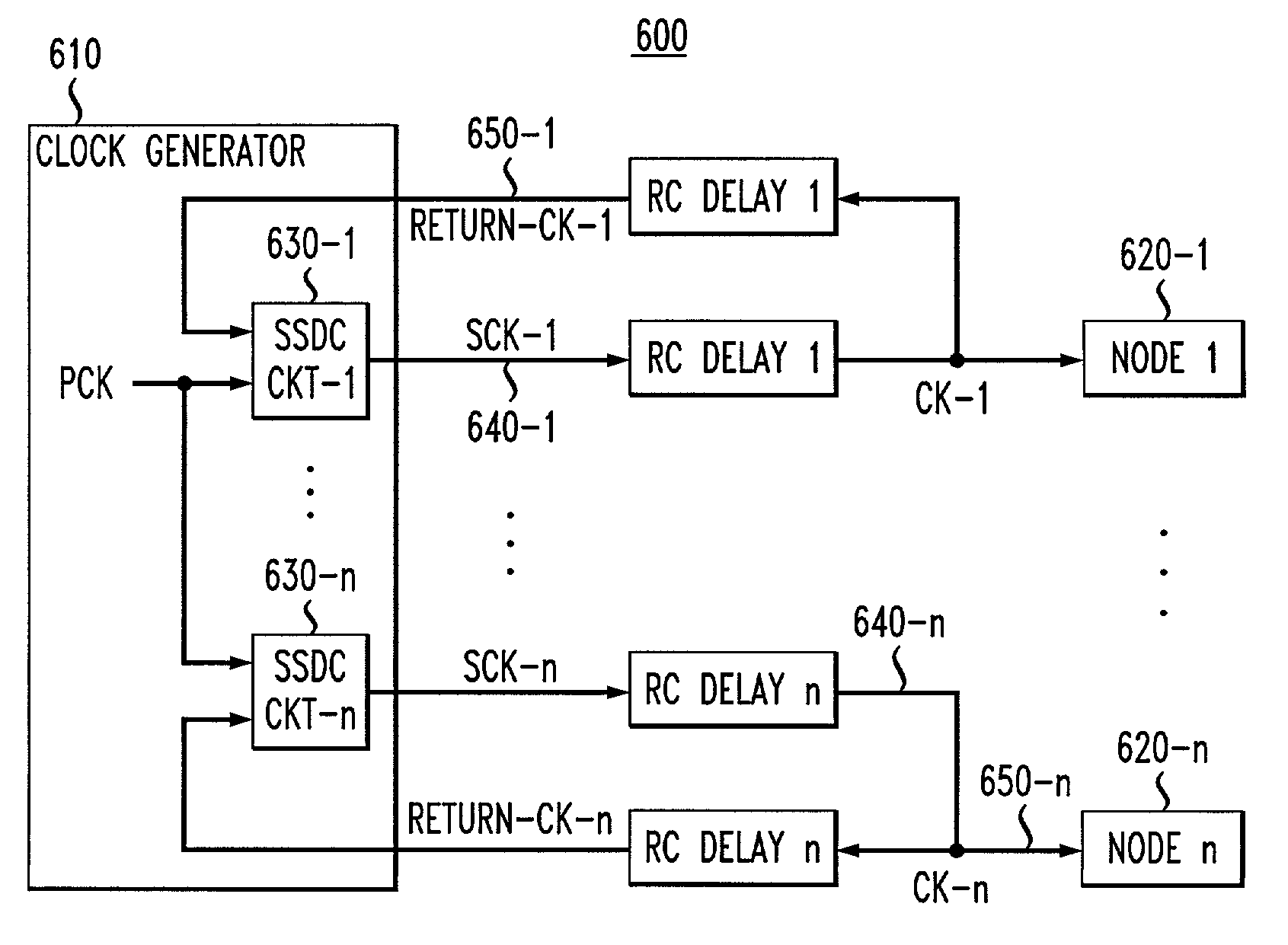Method and apparatus for distributing a self-synchronized clock to nodes on a chip
- Summary
- Abstract
- Description
- Claims
- Application Information
AI Technical Summary
Benefits of technology
Problems solved by technology
Method used
Image
Examples
Embodiment Construction
[0023]FIG. 5 is a schematic block diagram illustrating an exemplary SoC 500 where the present invention can operate. The exemplary SoC 500 includes a bus 510 that interconnects various nodes 520-1 through 520-N (multiple core devices), collectively referred to as nodes 520, on the chip 500. The nodes 520 may be embodied, for example, as memory devices, micro-controllers, microprocessors and digital signal processors (DSPs). When an SoC 500 includes multiple nodes 520 communicating over a common bus 510, an Arbiter 550 is often used to determine which node 520 should actively drive the bus 510 at a particular time. Multi-source / multi-sink control signals, such as acknowledgement (ACK), data-valid, interrupt and error signals, are often employed to control communications on the SoC bus 510. All of the various nodes 520 and the Arbiter 550 typically operate synchronously with respect to a common clock 560.
[0024]According to one feature of the present invention, an automatic clock skew ...
PUM
 Login to View More
Login to View More Abstract
Description
Claims
Application Information
 Login to View More
Login to View More - R&D
- Intellectual Property
- Life Sciences
- Materials
- Tech Scout
- Unparalleled Data Quality
- Higher Quality Content
- 60% Fewer Hallucinations
Browse by: Latest US Patents, China's latest patents, Technical Efficacy Thesaurus, Application Domain, Technology Topic, Popular Technical Reports.
© 2025 PatSnap. All rights reserved.Legal|Privacy policy|Modern Slavery Act Transparency Statement|Sitemap|About US| Contact US: help@patsnap.com



